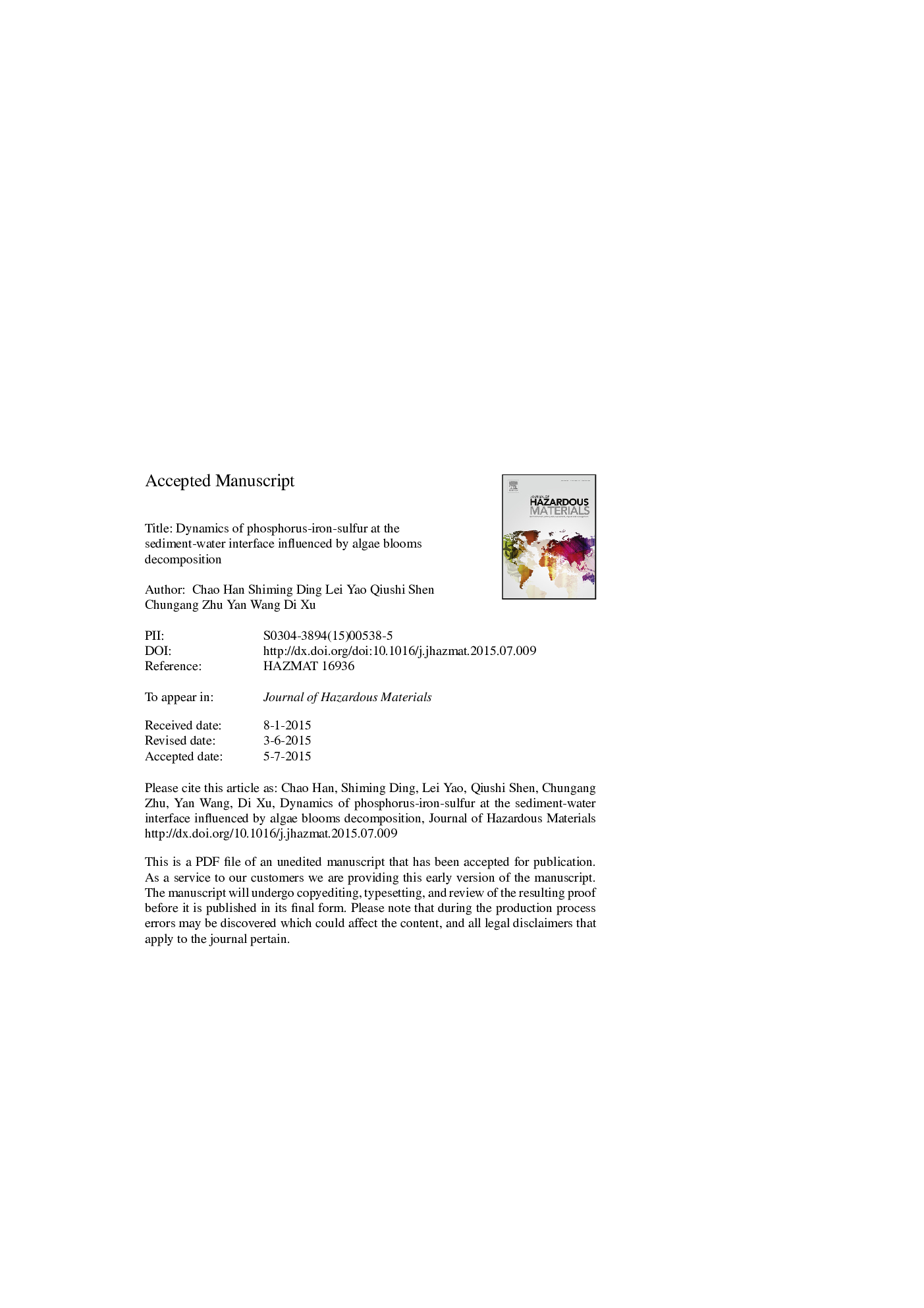| Article ID | Journal | Published Year | Pages | File Type |
|---|---|---|---|---|
| 575705 | Journal of Hazardous Materials | 2015 | 24 Pages |
Abstract
This study addresses the previously unknown effects of algae blooms on the dynamics of phosphorus (P), iron (Fe) and sulfur (S) across a lacustrine sediment-water interface (SWI). A mesocosm experiment was conducted in-situ to investigate these effects based on two recently-developed diffusive gradients in thin-films techniques (DGT). Soluble P, Fe(II), and S(-II) exhibited similar changing trends in a water column subject to the algae addition. Peak concentrations appeared on day 7 of the 16-day experiment. The lowest Eh occurred at the experiment's midway point indicating a strong algae degradation. A maximum increase in DGT-labile S appeared on day 8 near the SWI, while the DGT-labile P and Fe exhibited persistent increases almost to the end of experiment. Significantly positive correlations of labile P were observed switching from between labile Fe and labile S in sediments, suggesting a significant change in original Fe-coupled dynamics of P under algae decomposition. Apparent fluxes were calculated based on DGT profiles where a simultaneous release of P and S occurred from degraded algae, resulting in bidirectional diffusion fluxes from sediment to overlying water. In contrast, sediment acted as a major source of labile Fe due to added depth and apparently positive fluxes.
Related Topics
Physical Sciences and Engineering
Chemical Engineering
Chemical Health and Safety
Authors
Chao Han, Shiming Ding, Lei Yao, Qiushi Shen, Chungang Zhu, Yan Wang, Di Xu,
